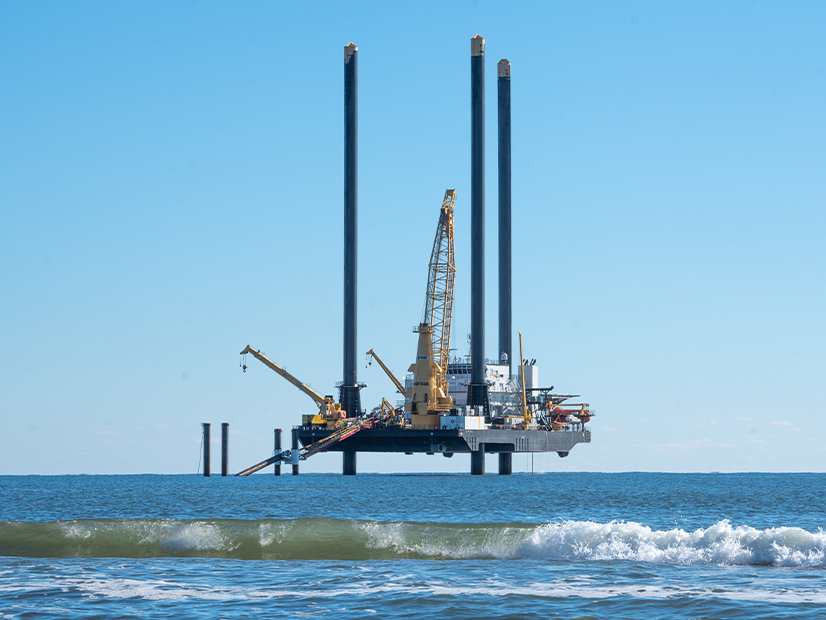
New York Gov. Kathy Hochul vetoed the Planned Offshore Wind Transmission Act approved by the state Legislature this year.
New York Gov. Kathy Hochul (D) has vetoed the Planned Offshore Wind Transmission Act approved by the state Legislature this year.
The legislation (A7764/S6218A) had two purposes: to establish a planning process for transmission capacity for future offshore wind generation and to allow an export cable for the Empire Wind project to run through parkland in the oceanside city of Long Beach.
Hochul said the first aspect is unneeded, as such planning is underway, and the second aspect is inappropriate, because renewable energy development needs to happen with support of the host community, not over its objections.
The Long Beach land matter was more immediate. Given the state of offshore wind development in New York state — almost the entire contracted portfolio, more than 4 GW in total, is in danger of cancellation — the reaction was predictable.
New York Offshore Wind Alliance Director Fred Zalcman said in a prepared statement: “The governor’s actions are not matching her words. As a previously professed champion of offshore wind, we are once again mystified by the governor’s decision to veto this essential authorization and to put another nail in the coffin of the Empire Wind project.”
Equinor, which is developing Empire Wind with bp, said: “The veto of The Planned Offshore Wind Transmission Act undermines New York’s commitment to the energy transition and the role offshore wind must play in achieving the state’s renewable energy mandates. This decision sends another troubling signal to renewable energy developers following [the] action by the New York State Public Service Commission.”
The PSC on Oct. 12 decided not to grant inflation-related cost adjustments to the Beacon, Empire and Sunrise offshore wind projects, along with 86 much smaller land-based wind and solar projects. (See New York Rejects Inflation Adjustment for Renewable Projects.)
Their developers had said they might not be able to commence construction without more money, as costs had increased greatly after they signed their contracts with New York state.
Long Beach became a rallying point because some residents do not want an underground cable running across the barrier island and their neighborhoods. (See ‘What Did We Do to Deserve This?’)
Under New York law, conveying parkland to a nonpublic entity or using it for something other than a park is called “alienation” and requires legislative authorization.
The language of the legislation authorized the city of Long Beach, at its discretion, to alienate roughly an acre of parkland. This left the choice to the city, and Hochul noted the city is opposed to alienation. But she went one step further in her veto message and denied even the choice to city leaders.
“It is incumbent upon renewable energy developers to cultivate and maintain strong ties to their host communities throughout the planning, siting and operation of all large-scale projects,” she wrote.
Other projects have been snagged by the state’s strong home-rule tradition, which can give local communities an outsized role in shaping large-scale development.
Critics of the route through Long Beach were pleased with the veto.
Rep. Anthony Esposito (R) cast it as a victory for a community fighting a deeply unpopular project being forced upon them.
He said in a news release: “Equinor’s attempt to bypass Long Islanders’ overwhelming opposition to the project by utilizing state legislators from New York City to force their corporate endorsed legislation on Nassau County was shameful. I am grateful Governor Hochul has listened to Long Islanders this time, but the fight to preserve our South Shore from Equinor’s corporate greed will continue.”
By contrast, the “planning” aspect of the Planned Offshore Wind Transmission Act was less emotional and more practical. It looks forward with the assumption that New York will want to expand offshore wind beyond the 9 GW of installed capacity goal that state law sets for 2035 and attempts to direct a more coordinated and cohesive transmission planning process to bring all that electricity to customers.
The legislation would have directed the New York State Energy Research and Development Authority to lead planning of independent transmission systems. Such shared transmission would minimize costs and environmental or community impacts, it said.
Hochul in her veto message said this is largely duplicative of existing planning requirements, such as New York’s Accelerated Renewable Energy Growth and Community Benefit Act. The PSC has begun meeting its requirements, she wrote.
“To the extent that this bill’s planning requirements are not duplicative, they would cause confusion by assigning contradictory and overlapping planning responsibilities to NYSERDA,” she wrote.
“In light of these concerns, I am constrained to veto this bill.”


